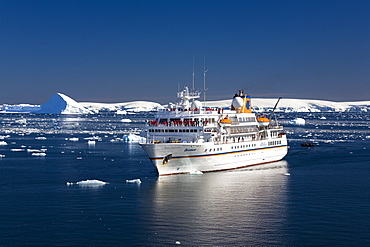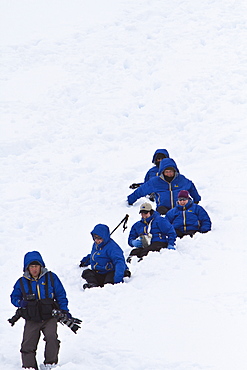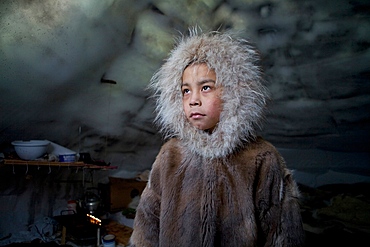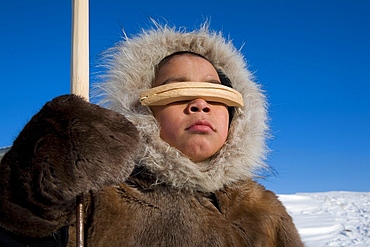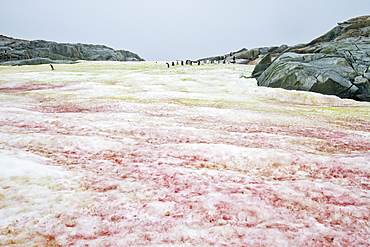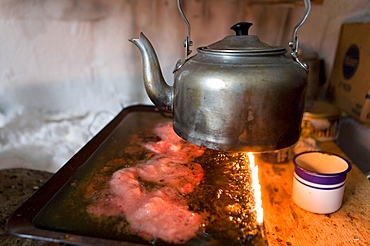Recent searches
Loading...
1060-11 - Two adult Humpback whales courting, Vava'u Tonga in the South Pacific
1060-8 - This new born calf with its mother graceful glide together as the mother protects her calf and the calf learns essential behaviour to survive the open ocean. taken in Vava'u Tonga South Pacific
1060-15 - Humpback male and female adults courting above the shallow reef, Vava'u Tonga, South Pacific
1060-22 - Antarctic skua attacks sea gull in South Georgia
1060-14 - New born baby humpback whale calf, white in colour, curious and playful. Vava'u Tonga South Pacific
799-1722 - Icebergs, brash ice and mountainous terrain on the Gerlache Strait, Antarctic Peninsula, Antarctica, Polar Regions
799-1723 - Icebergs drifting past snow covered mountains on the Gerlache Strait, Antarctic Peninsula, Antarctica, Polar Regions
832-34635 - Adelie penguins (Pygoscelis adelieae) on an iceberg, Deception Island, Antarctic
1184-810 - Antarctic fur seals (Arctocephalus gazella) and a huge Chinstrap penguin colony (Pygoscelis antarctica) on a black volcanic beach, Saunders Island, South Sandwich Islands, Antarctica, Polar Regions
1167-1728 - Palmer Station, year-round US Base, glacier backdrop, rocky foreshore, Anvers Island, Antarctic Peninsula, Antarctica, Polar Regions
1350-5737 - Inside an igloo in Gojahaven, an Inuit settlement in the far north of Canada.
1350-5731 - Inside an igloo in Gojahaven, an Inuit settlement in the far north of Canada.
197-3314 - Gentoo penguins, Antarctic Peninsula, Antarctica
1198-748 - King penguins (aptenodytes patagonicus) st andrews bay, south georgia, in snowy landscape, standing face to face
799-1355 - Intricate ice patterns on a weathered iceberg, Pleneau Island, Antarctic Peninsula, Antarctica, Polar Regions
979-4477 - Gentoo penguins (Pygoscelis papua) in Antarctica
979-9300 - Dead southern elephant seal (Mirounga leonina) pup being eaten by an Antarctic skua on South Georgia Island in the Southern Ocean
979-7237 - Adult emperor penguin (Aptenodytes forsteri) on sea ice near Snow Hill Island in the Weddell Sea, Antarctica.
1113-94038 - cruise ship MS Bremen, Prospect Point, Antarctic Peninsula, Antarctica
979-2408 - Views of the scenic Lemaire Channel on the west side of the Antarctic peninsula in Antarctica. Shown here is the National Geographic Endeavour navigating the channel through ice floes in late spring.
979-7143 - Adult gentoo penguin (Pygoscelis papua) trying to avoid hungry chick in Antarctica
197-2599 - Crabeater seal on ice floe, west coast of Antarctic Peninsula, Antarctica, Polar Regions
799-1334 - Midnight moon over the Antarctic Peninsula, Antarctica, Polar Regions
979-4440 - Adult southern fulmar (Fulmarus glacialoides) on the wing in the Drake passage between the tip of South America and Antarctica. Southern Ocean
979-7436 - Adult female leopard seal (Hydrurga leptonyx) stalking, then killing and eating an adult gentoo penguin in Paradise Bay, Antarctica, Southern Ocean
979-4931 - Gentoo penguins (Pygoscelis papua) in Antarctica
979-7559 - Guests from the Lindblad Expedition ship National Geographic Explorer slide down snow-covered hill in Orne Harbor, Antarctica
979-3924 - The Leopard seal (Hydrurga leptonyx) is the second largest species of seal in the Antarctic
1350-5702 - Portrait of young boy in Gojahaven, an Inuit settlement in the far north of Canada.
799-1390 - Magnificent arched iceberg near Enterprise Island, Antarctic Peninsula, Antarctica, Polar Regions
911-9941 - An iceberg melting in Suspiros Bay off Joinville Island just off the Antarctic Peninsular. The peninsular is one of the fastest warming places on the planet.
979-7101 - Southern Giant Petrel (Macronectes giganteus) taking flight near the Antarctic Peninsula, Southern Ocean
979-7654 - Wilson's storm-petrel (Oceanites oceanicus) daintily feeding in the calm waters of Neko Harbour on the Antarctic Peninsula
979-7068 - Antarctic Fur Seal (Arctocephalus gazella) during snow storm at Brown Bluff on the Antarctic Peninsula, Antarctica, Southern Ocean
979-6958 - Lindblad Expeditions guests doing the "polar Plunge" in Port Foster near Whalers Bay inside the caldera on Deception Island, South Shetland Island Group, Antarctica. NO MODEL RELEASES FOR THIS IMAGE.
979-7427 - Adult female leopard seal (Hydrurga leptonyx) stalking, then killing and eating an adult gentoo penguin in Paradise Bay, Antarctica, Southern Ocean
979-7373 - Full moon (plus 1 day) rising over icebergs in the Weddell Sea, Antarctica. MORE INFO This moonrise occurred on January 1, 2010, the night after the blue moon full of December 31, 2009.
911-9992 - Members of an expedition cruise to Antarctica in a Zodiak in Fournier Bay in the Gerlache Strait on the Antarctic Peninsular. The Antarctic Peninsular is one of the most rapidly warming areas on the planet.
1167-1729 - Palmer Station, year-round US Base, glacier and mountain backdrop, Anvers Island, Antarctic Peninsula, Antarctica, Polar Regions
979-4871 - Adelie penguin (Pygoscelis adeliae) near the Antarctic Peninsula, Antarctica.
979-9359 - Lindblad Expeditions guests on board the National Geographic Explorer with a lone adult emperor penguin (Aptenodytes forsteri) on sea ice, Antarctica
1350-5703 - Portrait of young boy in Gojahaven, an Inuit settlement in the far north of Canada.
1350-5704 - Building an igloo in Gojahaven, an Inuit settlement in the far north of Canada
1350-5696 - Portrait of young boy in Gojahaven, an Inuit settlement in the far north of Canada.
748-1293 - Adelie penguins (Pygoscelis adeliae), Port Martin, Antarctica, Polar Regions
799-1352 - Tourists walking through a penguin colony at Pleneau Island, Antarctic Peninsula, Antarctica, Polar Regions
799-1364 - Icebergs close to shore in Paradise Harbour, Antarctic Peninsula, Antarctica, Polar Regions
979-7194 - Adult emperor penguin (Aptenodytes forsteri) on sea ice near Snow Hill Island in the Weddell Sea, Antarctica.
979-7279 - Adult emperor penguin (Aptenodytes forsteri) on sea ice near Snow Hill Island in the Weddell Sea, Antarctica.
979-3910 - The Leopard seal (Hydrurga leptonyx) is the second largest species of seal in the Antarctic
979-3930 - Kayaking with a leopard seal near Danco Island, Antarctica
979-7560 - Guests from the Lindblad Expedition ship National Geographic Explorer enjoy a hot asado sandwich prepared by staff at BBQ on an ice floe near Adelaide Island, Antarctica
979-7693 - Adelie penguin (Pygoscelis adeliae) near the Antarctic Peninsula, Antarctica.
909-211 - Humpback whale (Megaptera novaeangliae) mother with calf swimming closeby. Wilhelmina Bay, Antarctic Peninsula
1350-5700 - Portrait of young boy in Gojahaven, an Inuit settlement in the far north of Canada.
799-1379 - Icebergs and mountains of the Antarctic Peninsula, Antarctica, Polar Regions
799-1381 - Icebergs and mountains of the Antarctic Peninsula, Antarctica, Polar Regions
979-7614 - A small pod of 8 Type B killer whales (Orcinus nanus) in pack ice near Snow Hill Island Island, Weddell Sea, Antarctica, Southern Ocean
979-9402 - Red and green algae-covered snow on Petermann Island, Antarctica, Southern Ocean
979-7949 - Antarctic shag (Phalacrocorax (atriceps) bransfieldensis) resting on iceberg near Paulet Island, Weddell Sea, Antarctica
979-7922 - Humpback whales (Megaptera novaeangliae) surfacing near Zodiac near the Antarctic Peninsula, Antarctica, Southern Ocean
979-7312 - Inside the abandoned Antarctic research British Base "W" on Detaille Island, Lallemand Fjord, Loubet Coast, Antarctica
1350-5715 - Legs of a young boy in Gojahaven, an Inuit settlement in the far north of Canada.
832-365571 - Helicopter flying above sea ice, Antarctica
799-868 - Unusual textured iceberg off the Antarctic Peninsula, Antarctica, Polar Regions
979-7297 - Adult emperor penguin (Aptenodytes forsteri) on sea ice near Snow Hill Island in the Weddell Sea, Antarctica.
979-7673 - Adelie penguin (Pygoscelis adeliae) near the Antarctic Peninsula, Antarctica.
979-7544 - Humpback whale (Megaptera novaeangliae) flukes-up dive near the Antarctic Peninsula, Antarctica, Southern Ocean
979-3922 - Kayaking with a leopard seal near Danco Island, Antarctica
979-4339 - Adult cape petrel (Daption capense) on the wing in and around the Antarctic peninsula
979-3931 - National Geographic photographer Joel Sartore and his wife Kathy kayaking with a leopard seal near Danco Island, Antarctica
979-3927 - The Leopard seal (Hydrurga leptonyx) is the second largest species of seal in the Antarctic
979-7139 - Chinstrap penguin (Pygoscelis antarctica) chick head detail at colony on Useful Island near the Antarctic Peninsula. There are an estimated 2 million breeding pairs of chinstrap penguins in the Antarctic peninsula region alone, perhaps as many as 7.5 million breeding pairs in all of Antarctica. Their name derives from the narrow black band under their heads which makes it appear as if they are wearing black helmets, making them one of the most easily identified types of penguin. Other names for them are "Ringed Penguins", "Bearded Penguins", and "Stonecracker Penguins" due to their harsh call. They grow to 68 cm (27 in). The average adult weight of a Chinstrap Penguin is 4.5 kg (10 lbs). Weight can range from 3 to 6 kg (6.6-13.2 lbs), with males being slightly larger and weight varying based on where the penguin is in the breeding cycle. Their diet consists of krill, shrimp, and fish. On land they build circular nests from stones, and lay two eggs, which are incubated by both the male and the female for shifts of five to ten days. They can also breed on icebergs, though they prefer non-icy conditions. The chicks hatch after about 35 days, and have fluffy gray backs and white fronts. The chicks stay in the nest for 20?30 days before they go to join a creche. At around 50?60 days old, they moult, gaining their adult plumage and go to sea. The Chinstrap Penguin was first described by German naturalist Forster in 1781. Its specific epithet was often seen as antarctica, however a 2002 review determined the genus Pygoscelis was masculine, and hence the correct binomial name is Pygoscelis antarcticus.
909-191 - Two Adélie Penguin (Pygoscelis adeliae) chicks enjoying childhood guarded by one of their parents. Petermann Island, Antarctica
1350-5730 - Inside an igloo in Gojahaven, an Inuit settlement in the far north of Canada.
1350-5734 - Building an igloo in Gojahaven, an Inuit settlement in the far north of Canada
1350-5721 - Frozen fish in Gojahaven, an Inuit settlement in the far north of Canada
1350-5725 - Man portrait in Gojahaven, an Inuit settlement in the far north of Canada
741-1345 - Antarctic Dream ship, Gerlache Strait, Antarctic Peninsula, Antarctica, Polar Regions
799-1387 - Icebergs near Enterprise Island, Antarctic Peninsula, Antarctica, Polar Regions
911-9959 - Light on mountainous scenery in Graham Land in Wilhelmina Bay on the Antarctic Peninsular, which is one of the fastest warming places on the planet.
979-4486 - Guests from the Lindblad Expedition ship National Geographic Explorer kayaking in and around the Antarctic Peninsula in the summer months.
979-7367 - Full moon (plus 1 day) rising over icebergs in the Weddell Sea, Antarctica. MORE INFO This moonrise occurred on January 1, 2010, the night after the blue moon full of December 31, 2009.
979-4344 - Wandering albatross (Diomedea exulans) on the wing in the Drake Passage between the tip of South America and the Antarctic Peninsula, Southern ocean
979-9107 - A sighting of adult sei whales (Balaenoptera borealis) in the Drake Passage, Southern Ocean
979-9361 - Antarctic fur seal pup (Arctocephalus gazella) near the abandoned whaling station at Stromness Bay on South Georgia, Southern Ocean
979-9312 - Ad?lie penguin (Pygoscelis adeliae) with Lindblad guests in snowstorm at Brown Bluff on the Antarctic Peninsula in the Weddell Sea , Antarctica.
917-246 - Antarctic Fur Seal pup, Arctocephalus gazella, yawning, South Georgia, South Atlantic Ocean.
911-10813 - Minke Whales(Balaenoptera acutorostrata) feeding in the Gerlache Strait separating the Palmer Archipelago from the Antarctic Peninsular off Anvers Island. The Antartic Peninsular is one of the fastest warming areas of the planet.
832-381599 - Cruise ship in the Lemaire Channel, Antarctica
832-374085 - Neko Harbor, Gerlache strait, Antarctic Peninsula, Antarctica
832-377916 - Church of Grytviken, former whaling station, King Edward Cove, South Georgia, South Sandwich Islands, British Overseas Territory, South Atlantic Ocean, Subantarctic, Antarctica
832-365657 - Captain Khlebevnikov icebreaker in Ross Sea pack ice, view from a helicopter, Antarctic
1113-94016 - Monument with chilean Lt. Luis Pardo at Point Wild, Shackleton Expedition, Elephant Island, South Shetland Islands, Antarctic Peninsula, Southern Ocean, Antarctica
799-869 - Iceberg arch, Antarctic Peninsula, Antarctica, Polar Regions
979-7411 - Adult female leopard seal (Hydrurga leptonyx) stalking, then killing and eating an adult gentoo penguin in Paradise Bay, Antarctica, Southern Ocean
979-7766 - Guests from the Lindblad Expedition ship National Geographic Explorer take the Polar Plunge off ice floe in the Weddell Sea, Antarctica, Southern Ocean



















